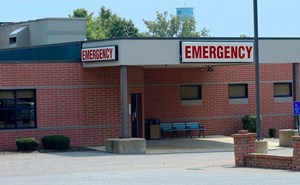After a three-week summer vacation, Regs & Eggs is back in full swing! There is much to catch you all up on in the regulatory world, so grab your eggs and let’s dig right into some of the recent news.
Last week, leaders from the Centers for Medicare & Medicaid Services (CMS) wrote a blog in Health Affairs that presented the agency’s strategy for innovating the Medicare, Medicaid, and Children’s Health Insurance Program (CHIP) programs over the next ten years. Led by the CMS Administrator, Chiquita Brooks-LaSure, the Director of the Center for Medicare & Medicaid Innovation (CMMI), Dr. Liz Fowler, and other agency officials, CMS reviewed the models that have been tested thus far by CMMI since the center was established over a decade ago. CMMI is a center within CMS, created by the Affordable Care Act, that tests alternative payment models (APMs)—or alternative approaches to paying for different services delivered to Medicare, Medicaid, and CHIP patients. CMMI has launched over 50 models since its inception and is currently operating 28 of them.
Although 50 models seem like a lot (and it is!), missing from CMMI’s portfolio of models is one focused primarily on emergency medicine. There is also a paucity of models that most physicians (other than primary care physicians) can actively take part in. As many of you know, ACEP had created an emergency medicine-specific APM called the Acute Unscheduled Care Model (AUCM) that was endorsed both by a federal advisory committee and the former Secretary of the U.S. Department of Health and Human Services (HHS). The overall goal of the AUCM is to improve the ability of emergency physicians to reduce inpatient admissions and observation stays when appropriate through enhanced care coordination. Emergency physicians would become key members of the continuum of care as the model focuses on ensuring follow-up care for emergency patients, minimizing redundant post-emergency department (ED) services, and avoiding post-ED discharge safety events that lead to follow-up ED visits or inpatient admissions. Despite the promise of the AUCM, CMMI has yet to adopt the model or at least consider incorporating elements of the model into any of its current APMs.
In CMS’ review of CMMI models, CMS unfortunately doesn’t identify the lack of models that emergency physicians and other specialists can currently participate in as a primary issue. Instead, CMS comes up with other major findings—some of which align with those found a recent report conducted by the Medicare Payment Advisory Commission (MedPAC). Of note, CMS states that health equity needs to become more of a focal point in models—as the majority of current models only focus on the Medicare population and do not include clinicians serving Medicaid and other vulnerable populations. Further, like MedPAC, CMS believes that CMMI is testing too many models, some of which have overlapping financial incentives. If clinicians or facilities are participating in more than one model at one time, CMS believes that it is difficult to discern which model actually works and helps achieve any savings or positive health outcomes. Thus, CMS is recommending testing fewer models.
Another issue CMS raises relates to voluntary versus mandatory participation in models. Most CMMI models are voluntary, which CMS believes tempers the opportunity for overall savings since participants likely only choose to participate if they feel that they can benefit financially. The alternative approach CMS could pursue going forward is making more models mandatory, meaning that certain clinicians and/or facilities would be required to participate in models and could not opt in or out. The AUCM is designed as a voluntary model that offers various levels of financial risk (i.e., the opportunity to either to share in financial savings or owe back a proportion of any financial losses) to participants depending on their experience and willingness to take on risk. ACEP believes that forcing clinicians, like emergency physicians who have had limited experience managing financial risk, to participate in models is the wrong approach.
Given CMS’ findings from all the CMMI models that have been tested thus far, the agency highlights five primary strategic objectives that will drive its work going forward: driving accountable care; advancing health equity; supporting innovation; addressing affordability; and partnering to achieve system transformation. CMS also states that it wants to add more transparency to the CMMI model development process and get more feedback from patients and other key stakeholders before new models are launched.
So, what does this all mean for the future of value-based care for you as emergency physicians and your patients? Well, to be honest, I don’t know for sure. While the goals included in CMS’ strategy are all extremely noteworthy and important, it is unclear exactly how CMS plans to modify existing models or design new models to achieve them. With respect to the AUCM, as outlined above, there are points in the blog that make me hopeful that CMS will eventually implement the model, and others that dimmer that hope.
First, on a positive note, I think the AUCM would fit well into CMS’ overall goal around health equity. The ED is the nation’s safety net, and, depending on where you practice, you treat many low-income patients and patients in underserved communities. Implementing the AUCM (and by doing so, helping to improve care coordination and avoid inpatient admissions or repeat visits to the ED) definitely has the potential to improve health outcomes among vulnerable patient populations. On the other hand, what concerns me about CMS’ vision is its heavy focus on streamlining models and reducing the number of available models. While different features of the AUCM can definitely be incorporated into an APM that CMMI is currently testing, if CMS’ first major goal is to simply cut models that seem to overlap with others, it could take a while for CMS to even consider that approach. In addition, the move towards mandatory models may also leave out opportunities for voluntary models like the AUCM to be implemented in some form.
Luckily, ACEP did have a chance recently to directly talk about the AUCM and other key priorities to the CMS Administrator and other CMS officials. Last Tuesday, ACEP’s Executive Director, Ms. Susan Sedory, along with leaders from other medical associations participated in a roundtable discussion with CMS. During the meeting, Ms. Sedory discussed some of the current issues emergency physicians are facing responding to the COVID-19 pandemic, the need for stable Medicare reimbursement, our commitments to addressing health care disparities and moving towards more value-based care, challenges around accessing care in rural areas, and our work around the implementation of the No Surprises Act. We are hopeful that CMS leadership came away from that meeting with a better understanding of how implementing a model like the AUCM could benefit Medicare, Medicaid, and CHIP patients.
As alluded to you earlier, there is a lot more regulatory news, so look forward to large helpings of regs and eggs in the weeks to come! Until next week, this is Jeffrey saying, enjoy reading regs with your eggs.






